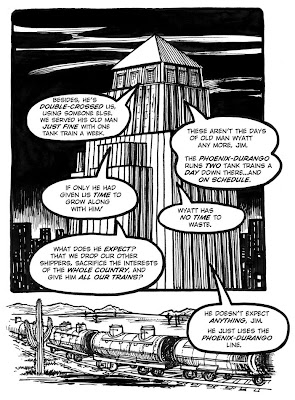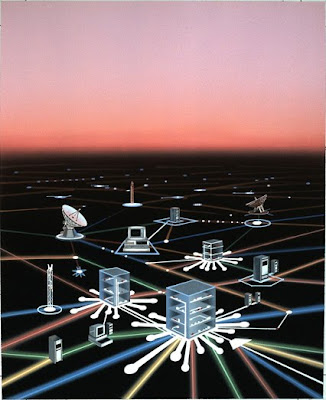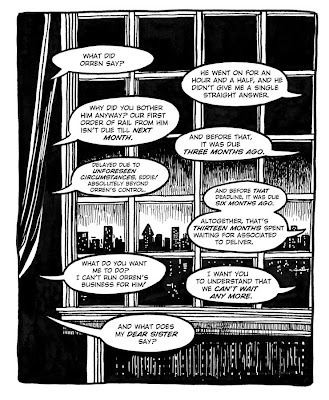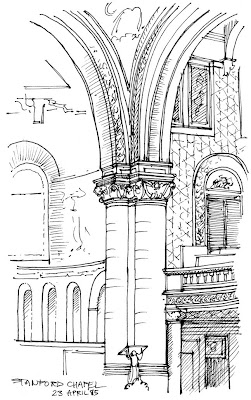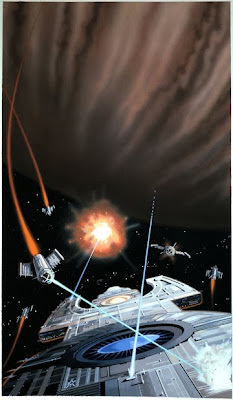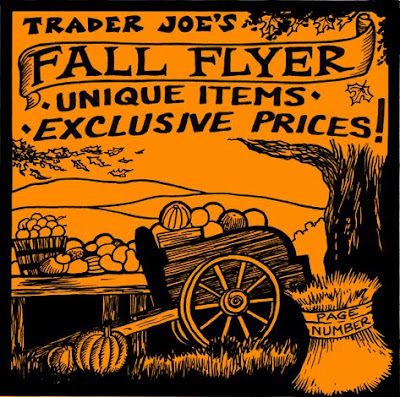
This is a teeny tiny piece of art, an "artist trading card" measuring 3 1/2" x 2 1/2". It's designated for a friend of mine. She requested one of my geometric abstractions, so here it is, in cheerful colors, made with markers on bristol board.
You've seen a lot of different kinds of art on this blog, from sketches to doodles to architecture, sentimental country landscapes, and hard-edge "modernist" geometric abstractions. And plenty of fantasy and science fiction and astronomical art, too. And also, graphic story panels and continuity. Doing a lot of different things isn't always the best strategy for an artist who wants to show and sell stuff. Galleries and art directors want to see a consistent style. So I can be consistent in any number of artistic "lines" or options, but amassing a portfolio in all of that takes time to do, which I don't have.
I sometimes think I should just pick one for a while and make a whole lot of them, which all look similar. Colorful geometric abstractions like the one above appeal to a lot of my friends and collectors. I get positive comments and even a bit of imitation (flattery!). So why not do a whole series of these?
I can do that, but I must admit, that they are designed according to an algorithm, a progressive series of instructions and rules. If I design according to the algorithm, things turn out right. I know how to keep it all in balance, and not go outside the lines or do anything messy. (I will not reveal the algorithm here, it's a trade secret.) But it can get somewhat mechanical at times.
I put a lot more work and time into "Summer Pastorale" (the one with the trees and the grazing cattle) than I would on a geometric of the same size. Perhaps I shouldn't admit that. I always assume that the value of a painting is partly determined by how much time and effort the artist put into it, and also how big it is. If a collector buys a picture I did in a day or so for a lot of money, am I ripping her off? One of my more aesthetic and analytical friends tells me that it's the design skills and the experience that count, not the time spent daubing or spraying. It's nice to believe that, but I have my doubts. This tiny trading card, by the criteria of size, and time and effort spent, is worth little monetarily, but someone will treasure it anyway.

